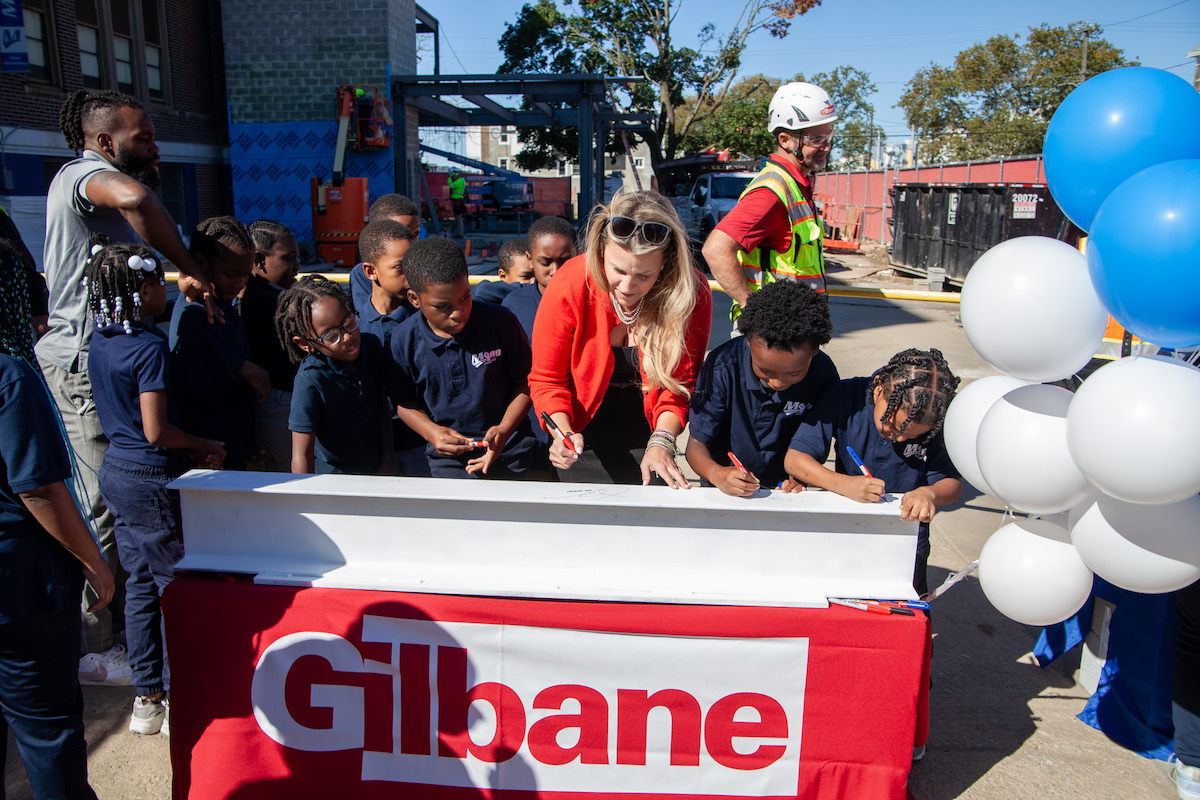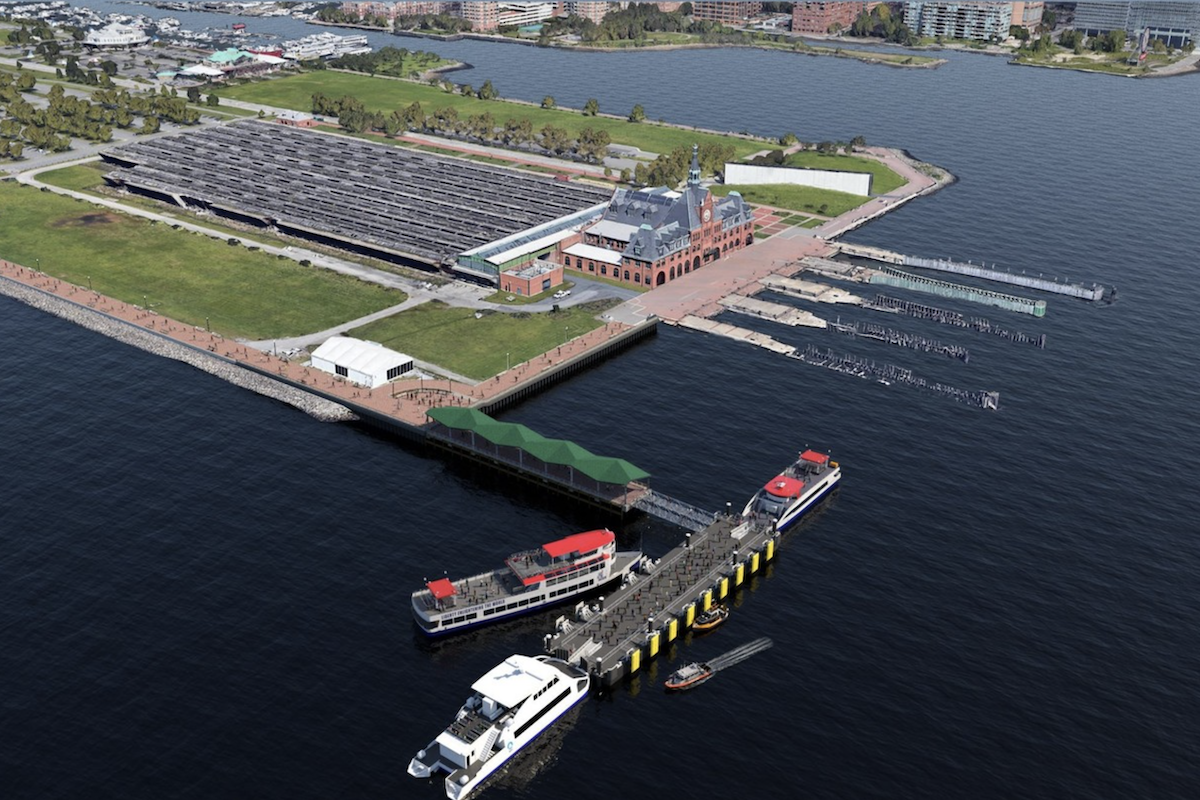Bow, New Hampshire, contractor R.S. Audley has a $43.8 million contract to reconstruct the bridge, which is actually two identical parallel structures built in 1966 to span the river between Lebanon, New Hampshire, and Hartford, Vermont. One bridge carries the northbound barrel of traffic while the other carries the southbound barrel. The New Hampshire Department of Transportation (NHDOT) inspects and maintains the bridges under an agreement with the Vermont Agency of Transportation (VTrans). Both bridges have structural and geometric deficiencies that earned them the ranking of second and third on NHDOT’s Red List for bridges. Audley will reconstruct the superstructure of the existing bridges and construct an in-fill bridge to close the gap between the two structures.
“This is a challenging, complicated project of massive scale, and access to the work areas is key to the whole job. Without the trestle, we couldn’t do much of anything,” said Scott Stevens, Vice President of R.S. Audley’s Bridge Division. Stevens said they started the project in September 2020, with crews setting up staging areas on the New Hampshire side of the project on either side of the abutments. Initial site work involved stripping topsoil and excavating and placing a stone bed for access roads on both sides of I-89 to get to the river. Twin State Sand & Gravel supplied aggregate for the site crew as they forged access roads and began work on the abutment cofferdam. The site crew also commenced construction of the trestle, starting it from the New Hampshire side because they could not get to it from the Vermont side due to grade differences.
The trestle supports a 50-foot-wide work platform/access roadway with a surface composed of 12-inch-thick hardwood crane mat that rests on steel girders ranging from single W24x94s to paired W24x104s. Girders in turn are supported by steel bents placed every 30 feet along the longitudinal axis of the trestle. Each bent consists of three hollow pipe piles spaced 25 feet apart and topped with horizontal H-piles serving as pile caps. The trestle has a 564-foot-long main component built close and parallel to the piers of the southbound bridge, plus four "finger" trestles reaching out from the main trestle 180 feet upstream between the piers.
Fleming is employing Link Belt LS138 and LS218 Lattice Boom Crawler Cranes to build the trestle, according to Richard McLeod, the company’s General Superintendent. He said they are using American Piledriving Equipment APE100 Vibratory Hammers to install the 20- to 24-inch pipe piles, which are supplied by Triad Metals. McLeod said that as of the end of May, the trestle was about 60 percent complete.

| Your local Trimble Construction Division dealer |
|---|
| SITECH Allegheny |
| SITECH Northeast |
The two six-span bridges, which are separated by about 30 feet, have non-composite concrete decks and haunched steel plate girders supported on cantilever abutments and hammerhead piers. Audley’s contract involves completely removing and replacing the concrete deck and steel girders of each bridge, while also repairing, rehabilitating and modifying the existing abutments and piers. It also calls for the construction of a new in-fill structure between the existing twin bridges.
The in-fill structure is actually a whole new bridge comprised of a concrete deck, steel girders, five hammerhead piers, and new footings. The in-fill footings are to be constructed between each of the five pairs of existing pier footings, four of which are located in the river on the New Hampshire side of the project. The fifth pier is located in Vermont adjacent to the New England Central Railroad corridor. All of the pier footing work has to be conducted in the dry, requiring the installation of steel sheet cofferdams. Fleming will install nearly a million pounds of steel H piles for the in-fill bridge construction. All abutment piles are HP14x73, while all pier piles are HP14x89. The specifications require all piles to have driving points.
“There are so many piles for the new in-fill piers, which are battered in four different configurations, that they look like porcupines down there,” said Stevens.
Even the abutments need to be buttressed by steel sheeting to support the earth during modifications.
Decks will be supported by new welded plate girders with 68-inch web depth. An estimated 3.3 million pounds of structural steel is being fabricated by Casco Bay Steel Structures. Eventually, the three bridges will be joined together via concrete deck closure pours to form a single bridge with a 110-foot out-to-out width. The deck will be paved with 2-1/2 inches of bituminous concrete and will provide three 12-foot travel lanes and 12-foot shoulders in each direction. Continental Paving is installing the two-course hot mix asphalt pavement.

| Your local Trimble Construction Division dealer |
|---|
| SITECH Allegheny |
| SITECH Northeast |
A June 2010 waterway and scour report determined that both I-89 bridges were “scour critical” and that their foundations were unstable for calculated scour conditions. In particular, the 100-year depth of potential scour for Pier 2 was a surprising 20 feet.
As a result of waterway and scour studies, the project design includes scour countermeasures, the major components of which are ShoreJax SJ-24 “A-Jacks.” These are interlocking concrete armor units designed to resist erosive forces generated by fast-flowing water. Resembling the “jacks” of the traditional children’s game, these units can be bundled together with stainless steel cables for various applications, for example, preventing bridge pier scour. For the I-89 project, A-Jacks will be placed in a 148-foot by 78-foot pattern around each of Bridge Piers 2 and 3, which exhibited the most damaging scour in previous studies. An estimated 17,200 individual A-Jacks will be installed around those piers.
Another design improvement is said to enhance the structure’s resistance to seismic activity. Bridge seats will be fitted with CON-SERV disc bearings. In general, bearings transfer forces from bridge superstructure to the substructure. The bearings to be installed on the I-89 Bridge will be High-Load Multi-Rotational Bridge Bearings (HLMR), which according to the manufacturer allow the new beams to slide if an earthquake occurs.
The extensive bridge reconstruction and geometric improvements to be made under Audley’s five-year contract are expected to achieve these goals. And they will be installed within the specified time frame, according to Stevens.
“Progress has been very good. We’ve finished 20 percent of the entire job within the first eight months. Barring any unforeseen problems, we expect to complete our work without any difficulty by the October 2025 deadline.”

| Your local Trimble Construction Division dealer |
|---|
| SITECH Allegheny |
| SITECH Northeast |






































































